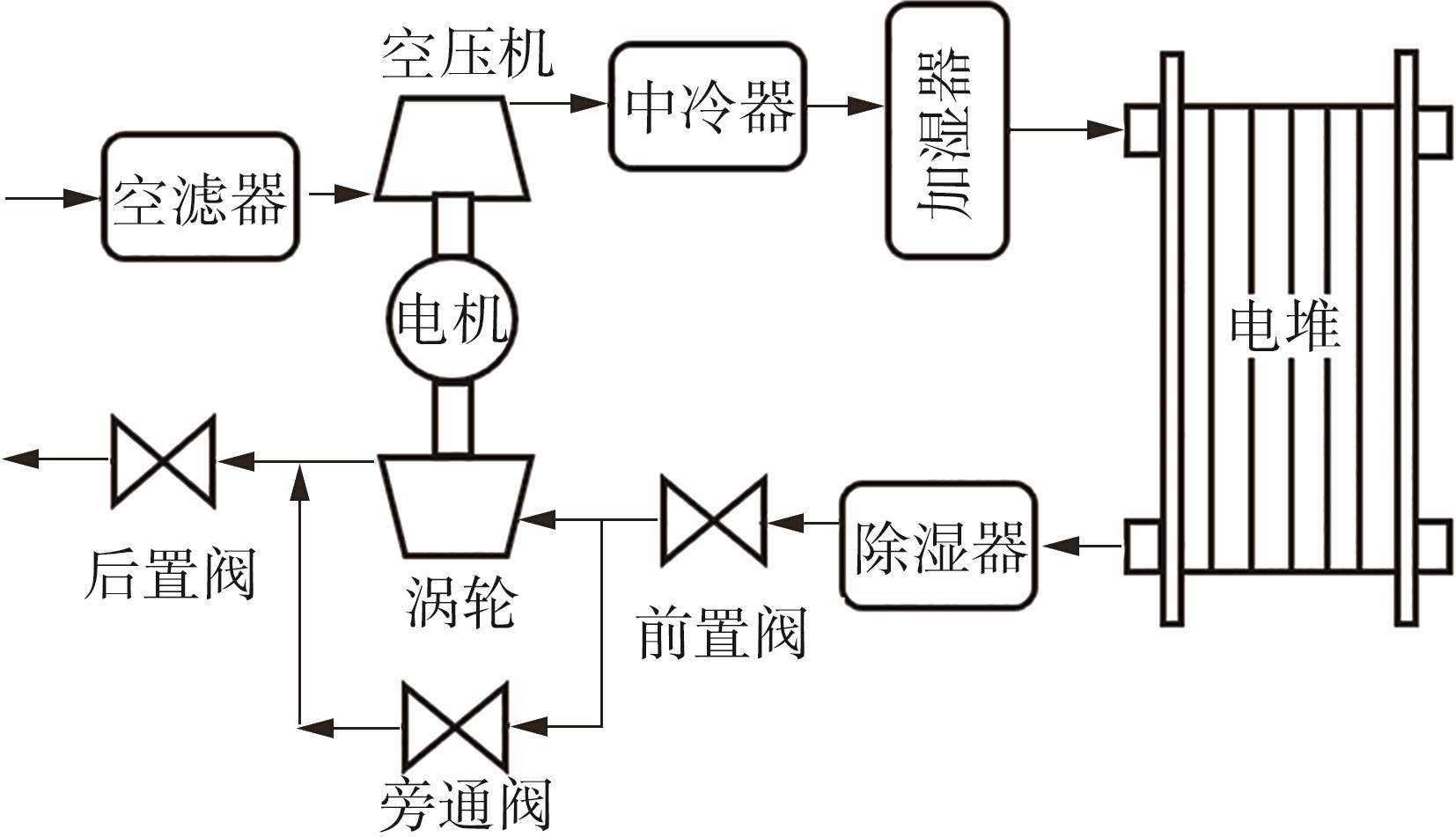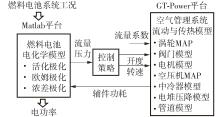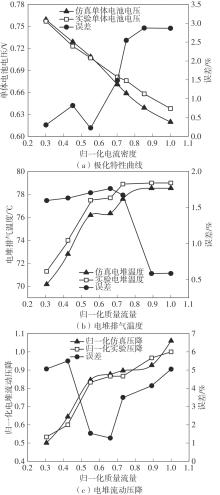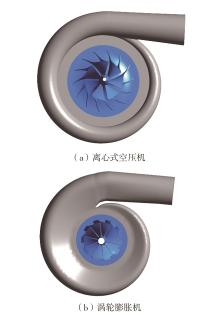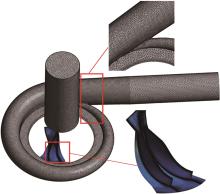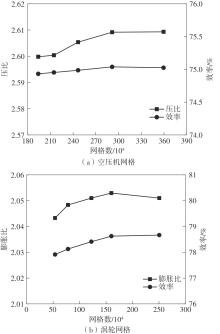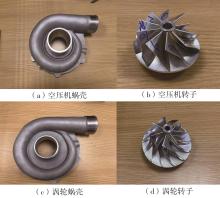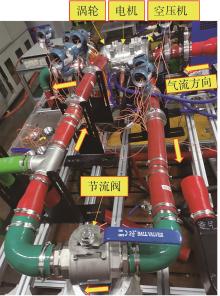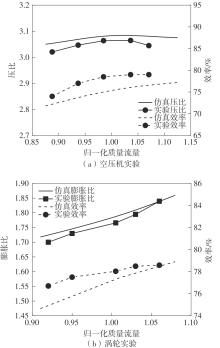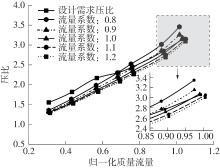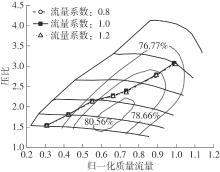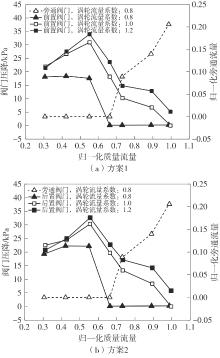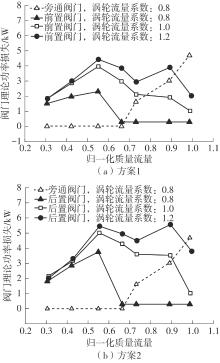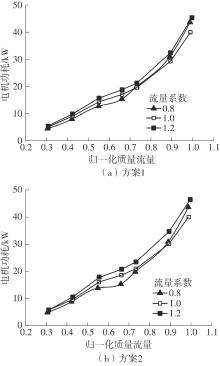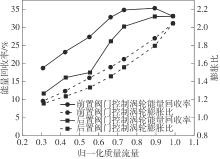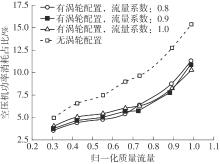Journal of South China University of Technology(Natural Science Edition) ›› 2024, Vol. 52 ›› Issue (9): 93-103.doi: 10.12141/j.issn.1000-565X.230550
• Mechanical Engineering • Previous Articles Next Articles
Modeling and Regulation of the Turbo-Electric Drive Compressor System for Fuel Cell Stack
ZHAO Rongchao( ), WANG Zhen, ZHU Zhiyong, LI Weihua
), WANG Zhen, ZHU Zhiyong, LI Weihua
- School of Mechanical and Automotive Engineering,South China University of Technology,Guangzhou 510640,Guangdong,China
-
Received:2023-08-31Online:2024-09-25Published:2024-01-26 -
About author:赵荣超(1987—),男,博士,副教授,主要从事燃料电池空气管理系统研究。E‐mail:merczhao@scut.edu.cn -
Supported by:the Basic and Applied Basic Research Foundation of Guangdong Province(2021A1515011690)
CLC Number:
Cite this article
ZHAO Rongchao, WANG Zhen, ZHU Zhiyong, et al. Modeling and Regulation of the Turbo-Electric Drive Compressor System for Fuel Cell Stack[J]. Journal of South China University of Technology(Natural Science Edition), 2024, 52(9): 93-103.
share this article
| 1 | 张伟,向洪坤 .燃料电池汽车基本技术及发展综述[J].智慧电力,2020,48(4):36-41,96. |
| ZHANG Wei, XIANG Hongkun .Review on basic technology and development of fuel cell vehicle[J].Smart Power,2020,48(4):36-41,96. | |
| 2 | 王吉华,居钰生,易正根,等 .燃料电池技术发展及应用现状综述(下)[J].现代车用动力,2018(3):1-5. |
| WANG Jihua, JU Yusheng, YI Zhenggen,et al .Review on development and application of fuel cell technology(2)[J].Modern Vehicle Power,2018(3):1-5. | |
| 3 | WAN Y, GUAN P, XU S C .Improved empirical parameters design method for centrifugal compressor in PEM fuel cell vehicle application[J].International Journal of Hydrogen Energy,2017,42(8): 5590-5605. |
| 4 | 郝冬,朱凯,张妍懿,等 .燃料电池电动汽车专用空压机技术简析[J].汽车零部件,2019,8(31):96-100. |
| HAO Dong, ZHU Kai, ZHANG Yanyi,et al .Brief introduction of technology of air compressor for fuel cell vehicles[J].Automobile Parts,2019,8(31):96-100. | |
| 5 | JIN J J, PAN J F, LU Z G,et al .An investigation of a high-performance centrifugal compressor with a variable map width enhancement slot for proton exchange membrane fuel cell systems in commercial vehicle application[J].Proceedings of the Institution of Mechanical Engineers Part D-Journal of Automobile Engineering 2021,235(1):288-300. |
| 6 | LIU J S, LI W, LIU M X,et al .Multi-objective aerodynamic design optimisation method of fuel cell centrifugal impeller using modified NSGA-II algorithm[J].Applied Sciences-Basel,2021,16(11):7659-7680. |
| 7 | ZHANG Y M, XU S C, LIN C J .Performance improvement of fuel cell systems based on turbine design and supercharging system matching[J].Applied Thermal Engineering,2020,180:115806/1-10. |
| 8 | 陈培江,洪伟荣,陈德鑫 .燃料电池用空压机性能设计与参数优化[J].流体机械,2020,48(10):22-29. |
| CHEN Peijiang, HONG Weirong, CHEN Dexin .Performance design and parameter optimization of air compressor for fuel cell[J].Fluid Machinery,2020,48(10):22-29. | |
| 9 | ZHAO Y Y, LIU Y X, LIU G B,et al .Air and hydrogen supply systems and equipment for PEM fuel cells: a review[J].International Journal of Green Energy,2022,19(4):331-348. |
| 10 | ZHANG Y M, BAO P L, WAN Y,et al .Modeling and analysis of air supply system of polymer electrolyte membrane fuel cell system[J].Energy Procedia,2017,142:1053-1058. |
| 11 | AHSAN N, AL R A, ZAIDI A A,et al .Performance analysis of hydrogen fuel cell with two-stage turbo compressor for automotive applications[J].Energy Reports,2021,5(7),2635-2646. |
| 12 | 侯明,衣宝廉 .燃料电池技术发展现状与展望[J].电化学,2012,18(1):1-13. |
| HOU Ming, YI Baolian .Progress and perspective of fuel cell technology[J].Journal of Electrochemistry,2012,18(1):1-13. | |
| 13 | TURNER W, PARTEN M, VINES D,et al .Modeling a PEM fuel cell for use in a hybrid electric vehicle[C]∥Proceeding of the 1999 IEEE 49th Vehicular Technology Conference. [S.l.]:IEEE,1999:1385-1388. |
| 14 | WITTMANN T, LUECK S, BODE C,et al .On the impact of condensation and liquid water on the radial turbine of a fuel cell turbocharger[J].Machines,2022,9(10),187-195. |
| 15 | 史旭阳,吴艳辉,范鑫 .周向单槽机匣处理调控高压涡轮叶尖泄漏流的数值研究[J].推进技术,2023,44(8):33-41. |
| SHI Xuyang, WU Yanhui, FAN Xin .Numerical investigations on tip leakage flow control of high-pressure turbine with single circumferential groove casing treatment[J].Journal of Propulsion Technology,2023,44(8):33-41. |
| [1] | BAI Xingying, JIAN Qifei, LUO Lizhong, et al. Application of Vapor Chamber in the Thermal Management of Proton Exchange Membrane Fuel Cell Stack#br# [J]. Journal of South China University of Technology (Natural Science Edition), 2021, 49(2): 25-32. |
| [2] | LI hong CHU Jiangwei YUAN Shankun . Performance of Vehicle Electromagnetic Coupling Flywheel Energy Storage Device [J]. Journal of South China University of Technology (Natural Science Edition), 2020, 48(6): 50-57. |
| [3] | JIANG Jihai, DU Zhi, SHEN Wei, et al. Research on Energy Saving of Linear Actuator Based on Hydraulic Transformer [J]. Journal of South China University of Technology (Natural Science Edition), 2020, 48(2): 116-121,136. |
| [4] | Li Xiu- hua Lin Yong- hua. Structure and Properties of Sequenced Block Ionomers Containing Hydrophilic Macrosegments [J]. Journal of South China University of Technology (Natural Science Edition), 2014, 42(6): 79-87. |
| [5] | Chu Liang Wang Yan- bo Yao Liang Zhang Yong- sheng Wei Wen- ruo. Simulation of Coordinated Control of Braking Torque for Braking Energy Recovery System [J]. Journal of South China University of Technology (Natural Science Edition), 2014, 42(4): 137-142,148. |
| [6] | Chu Liang Cai Jian- wei Fu Zi- cheng Zhang Yong- sheng Yao Liang Wei Wen- ruo . Control Strategy of Uniaxial Decoupled Hybrid Braking System and its Test Verification [J]. Journal of South China University of Technology (Natural Science Edition), 2014, 42(11): 40-49. |
| [7] | Yang Wei Chen Sheng-zhou Dong Xin-fa Lin Wei-ming. Preparation and Performance of Co-N-C Electro-Catalysts for Direct Methanol Fuel Cell [J]. Journal of South China University of Technology(Natural Science Edition), 2012, 40(3): 10-14. |
| [8] | Shen Wei Jiang Ji-hai. Analysis of Energy Recovery Efficiency of Hydraulic Hybrid Excavator [J]. Journal of South China University of Technology(Natural Science Edition), 2012, 40(1): 82-87. |
| [9] | Zhong Li Chuang Karl. Influences of H2S Content and Flowrate on Performance of Fuel Cells [J]. Journal of South China University of Technology (Natural Science Edition), 2009, 37(9): 123-127. |
| [10] | Sui Jing Tang Yu-bao Liu Jiang. Influence of Buffer Layer on Performance of SOFC Supported by Al2O3 -Doped YSZ Electrolyte [J]. Journal of South China University of Technology (Natural Science Edition), 2008, 36(7): 47-50,56. |
| [11] | Zhong Li Zhu Bin Chuang Karl . Fabrication and Electrochemical Performance of Li2 SO4-Based Composite Proton-Conducting Membrane [J]. Journal of South China University of Technology (Natural Science Edition), 2008, 36(7): 1-5. |
| [12] | Liao Shi-jun Chen Min . Factors to Affect Preparation of Pt/C Catalyst via Organic Colloidal Method [J]. Journal of South China University of Technology (Natural Science Edition), 2008, 36(11): 1-6. |
| [13] | Ding Jiao Guo Wei-min Liu Jiang. Fabrication and Property of SOFC via Colloidal Spray Coating [J]. Journal of South China University of Technology (Natural Science Edition), 2007, 35(11): 76-80. |
| [14] | Zhong Li Chuang Karl. A H2 S Intermediate-Temperature Fuel Cell with Nano-Composite Li2 SO4 Proton-Conducting Membran [J]. Journal of South China University of Technology (Natural Science Edition), 2007, 35(10): 117-123. |
| [15] | Huang Shi-sheng Tang Zhao-yang Wang Zhen-min Chen Yi-ting. Design of Power Conditioning System for Fuel Cell Power Plant [J]. Journal of South China University of Technology (Natural Science Edition), 2007, 35(10): 20-25,48. |
| Viewed | ||||||
|
Full text |
|
|||||
|
Abstract |
|
|||||

